Europe’s highest vineyard spins heads
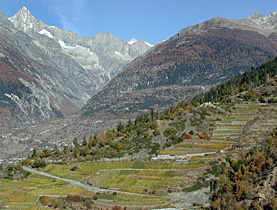
The terraced vineyards of Visperterminen, a village in canton Valais, rise from 650 metres to a European record of 1,150 metres.
Winegrowing has a long tradition in Visperterminen. Archaeologists have determined that Celts dabbled with grapes there.
“No one knows for sure when winegrowing began here,” Pirmin Heinzmann told swissinfo.ch. “At any rate I wasn’t around.”
Heinzmann, born in Visperterminen in 1945, has been cellarmaster at the St Jodern cellars at Europe’s highest vineyard since 1980.
He explains how previously people only made wine for personal use. “People lived hand to mouth. To feed your family you had to grow your own food – every house would have wine, milk, cheese and potatoes,” he said.
“Mineral water and beer were unaffordable – wine was what people drank at home. Later they stocked up with water and beer when working in the fields and the consumption of wine dropped. Drinking habits changed and after the war wine became a luxury.”
Heinzmann started off in construction. “But I was always fascinated by vineyards because my father had been a mountain farmer and had dealt with vines. I then had the idea of switching from agriculture and livestock farming to winegrowing – basically changing jobs.”
“Alpine pearl”
To maintain winegrowing in Visperterminen, a cooperative was formed in 1979 and the St Jodern cellars a year later.
Prior to 1979 many of the plots were not cultivated – especially those right at the top, which were really hard to reach.
“Since it would be a shame for Valais and indeed Switzerland to lose the highest vineyards in Europe, we got support from the Swiss Countryside Foundation and rebuilt the walls. In 1979 we started using the plots again,” Heinzmann said.
However, the highest plots were too far away for private owners, who had enough vines elsewhere.
“I found six like-minded people – someone involved in tourism, a lawyer, a banker and three winegrowers. We expropriated the highest vines and in 1999 formed the Heida guild – named after the white wine from Visperterminen, ‘the pearl of alpine wines’.”
Heida is a Traminer-like, white wine grape with green-skinned berries which is made into table and dessert wines.
“We got the highest plots going again and drew up statutes saying that whoever wanted to join in had to pay SFr1,000 ($940) to the guild. For that, they’d get a vine with their name and once a year a bottle of wine with a personalised label,” he said.
History
Roland Zimmermann, president of the Visperterminen commune from 2000 to 2008, said it was important for the sake of the commune that Europe’s highest vineyard be preserved.
“The cultural landscape is what is closest to my heart,” he told swissinfo.ch.
Zimmermann had connections in the Swiss Countryside Foundation, which supported the project with SFr150,000. The plots were remeasured and the stone walls rebuilt.
“For me it’s a very sustainable project – economically and ideologically,” he added. “For this vineyard says a lot about the history of our forefathers.”
As for the guild, Zimmermann said they “wanted to appeal to people who really enjoy wine but don’t know anything about wine-growing”.
Heida high
Heinzmann is in charge of the guild and is proud that members come from across the entire country and from all social backgrounds.
“Young, old, men, women – we’ve even got two priests,” he said. “Every member has to work in the vineyard at least once a year – otherwise there’s a SFr100 fine!”
But with 250 members already, Heinzmann has to turn down new applicants. “We’ve got a waiting list – and not enough vines.”
In the meantime the Heida wine has developed into a top brand.
“This is down to the type of wine itself. It’s a foreign culture [Heida comes from the German word Heide, meaning heathen] that has acclimatised well to our vineyard and has resulted in very fruity and aromatic wines strong in alcohol and sugar,” he said.
“Leg breaker”
Heinzmann said they had also been to tastings and were amazed at how highly experts rated Heida.
“So the wine press also got to know about it,” he said with a smile.
However, reviews for Heida haven’t always been glowing. A hundred years ago G. F. Stebler, a professor at the Federal Institute of Technology in Zurich, described Heida as a “dangerous leg breaker”, on account of the high alcohol content, which can be up to 14 per cent.
“Heida loosens one’s tongue and assists one in reaching a blissful frame of mind,” he wrote in his “Monograph from the Swiss Alps”.
In addition, “locals appear to be able to handle the wine better than outsiders”, swissinfo.ch was told by one Visperterminen resident, naturally a member of the guild.
Jean-Michel Berthoud in Visperterminen, swissinfo.ch (Adapted from German by Thomas Stephens)
The Heida white wine is made from the small low-yielding grapes of the same name.
The lowest vines are planted at 660 m above sea level on the banks of the Vispa.
The vineyard consists of short terraces with dry stone walls, rising steeply to more than 1100 m.
Its position on a south-facing slope in the driest part of Switzerland and the large flat stones of the terrace walls concentrate the warmth of the sun on the vineyard until late autumn.
Heida wine, derived from Savagnin blanc or Traminer, is known as the “Pearl of Alpine wines”. It is unique to this vineyard.
The wine is sold mainly in hotels and restaurants in the area, including in Zermatt and Saas Fee.
The wine is also sold directly from the winery. It is possible to taste the wine at the St Jodern cellars.
The Coop supermarket is a major customer. Under its “Pro Montagna” label it promotes food and wine from Swiss mountain areas.
Heida wine can also be bought at groceries in the area.
Every Swiss knows that Visperterminen has the highest vineyards in Europe. And yet…
The Canary Islands boast a vineyard at 1600 m.
Cyprus has vineyards at 1500 m in the Limassol district and at 1250 m near Paphos.
On the European mainland, Spain claims vineyards at 1300 m in the mountains of the Granada district.
And the Aosta valley of northern Italy, just over the border from Switzerland, has a vineyard at 1225 m.
The highest vineyards in the world are in the foothills of the Andes in Argentina, where the El Arenal vineyard at just over 3000 m claims to be the highest of all.

In compliance with the JTI standards
More: SWI swissinfo.ch certified by the Journalism Trust Initiative

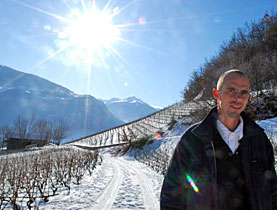
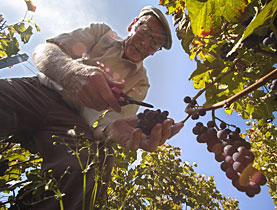
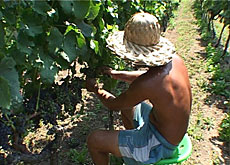
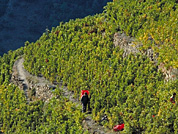
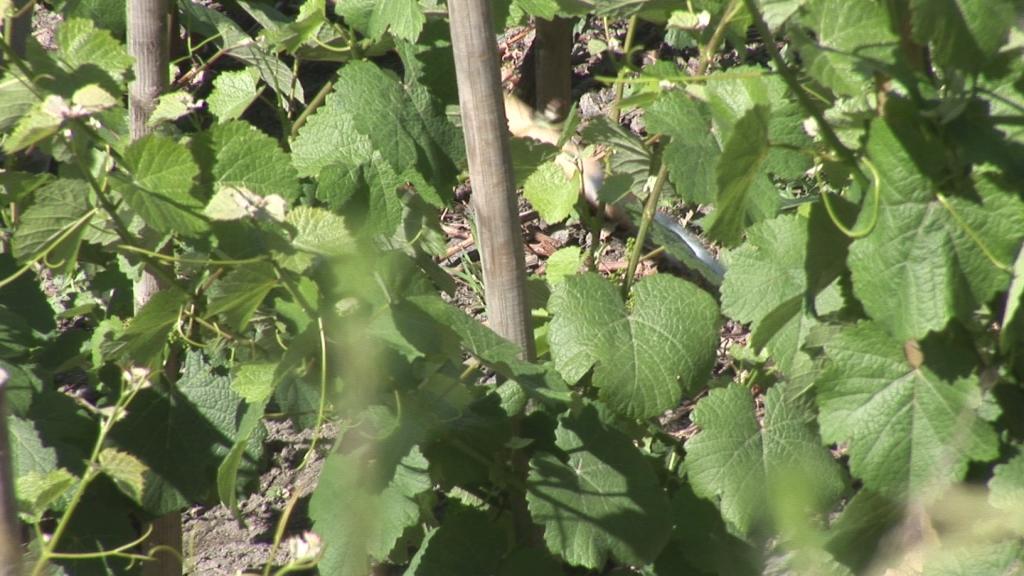
You can find an overview of ongoing debates with our journalists here. Please join us!
If you want to start a conversation about a topic raised in this article or want to report factual errors, email us at english@swissinfo.ch.